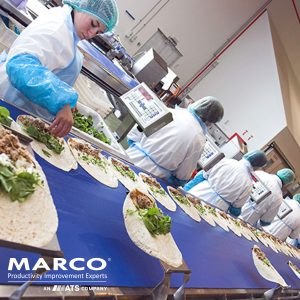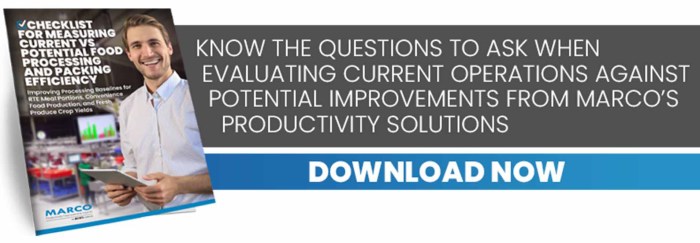Author: Jon Heard
Enhancing Food Manufacturing Efficiency: A Comparison of Portion Control Scales
In today’s challenging landscape of rising raw material costs and a changing labour market, food manufacturers must optimise every aspect of their production process to maximise value. Precision in weighing and measuring portions, especially for convenience foods and high-cost proteins in ready meals, can significantly impact the bottom line. With consumer demand for convenience meals on the rise, food manufacturing companies are constantly seeking ways to improve processing speed, accuracy, and consistency to stand out in a competitive market.
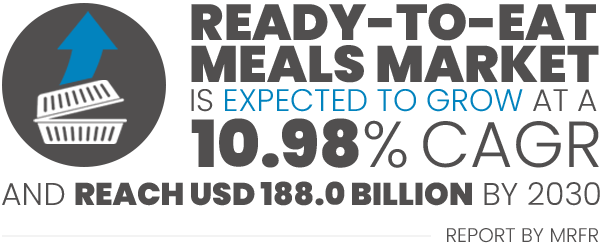
One of the key factors contributing to their success is the choice of weighing equipment used on their production lines. Integrated and intelligent weighing solutions play a crucial role in reducing giveaway, maintaining labour productivity, and ensuring compliance with customer specifications. In this article, we will explore the differences between two common types of scales in the food manufacturing industry: Positive Scales and Takeaway Scales.
Understanding Positive Scales?
Positive scales are still widely used in various settings, including home kitchens, restaurants, takeaway establishments, and food processing facilities. They can be either analogue or digital, but the defining feature is that they provide operators with a precise weight measurement of the material placed on the scale pan.
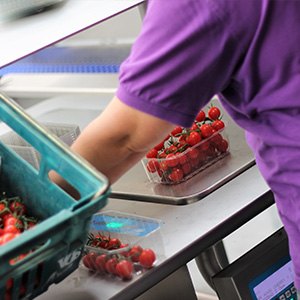
To portion a meal using positive scales, assembly line workers place the ingredient on the scale pan and adjust the portion until it reaches the desired weight. Once the target weight is achieved, the portion is transferred to the meal container and the process repeats for the next tray.
However, organisations relying on positive scales encounter several challenges:
- Time – Portioning with positive scales is time-consuming, as operators must pick up, place, and adjust the portion before transferring it to the final container.
- Accuracy – While positive scales provide accurate measurements, the size of portions can vary significantly from one container to the next when operators prioritise speed over precision.
- Traceability – Using basic scales without data collection offers limited insight into operator performance or the amount of overpack or giveaway per container.
Using basic scales without data collection offers limited insight into operator performance or the amount of overpack or giveaway per container. However, takeaway scales offer a potential solution.
How Takeaway Scales boost efficiency
Takeaway scales guide workers on how much material to remove from a bulk container to achieve the target portion weight. By setting the portion weight, the scale can quickly calculate when the operator has removed the required amount of material, ensuring consistently accurate portions on each product tray.
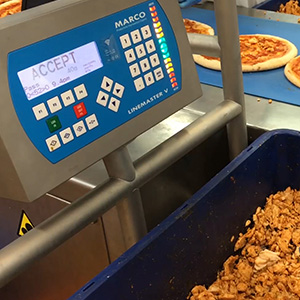
By eliminating the positive weighing step, operators can speed up portioning tasks while maintaining accuracy. A colour-coded 16-segment traffic light display provides immediate feedback to the operator. When a green light appears, the operator knows they have the correct portion weight to deposit into the meal.
Takeaway scales improve portioning tasks by:
- Indicating the exact portion weight for each meal
- Simplifying the production line with a straightforward ‘traffic light’ system to regulate material quantity
- Connecting the entire line with software modules that yield tracking, operator control, and comprehensive data on processing performance
With MARCO’s takeaway scales, food manufacturers can be fast, accurate, and cost-effective when portioning RTE meals or convenience foods.
Some of MARCO’s solutions include Takeaway Scales, Positive Scales/Workstations, and the Yield Control Module, all designed to optimise efficiency, improve consistency, and minimise overpack percentages.
Discover how MARCO can transform your portioning process
MARCO’s solutions can reduce reliance on skilled labour by up to 50%, enabling organisations to reallocate resources and enhance overall processing efficiency. These productivity tools are modular and seamlessly integrate with your existing systems, providing complete traceability and insight into your food manufacturing process. By using better tools to support management and operations, you can claw back your overpack rates to within 1% of material volumes.
To see how you can increase the speed, accuracy, and traceability of your food portioning lines, request a demonstration from MARCO today.

